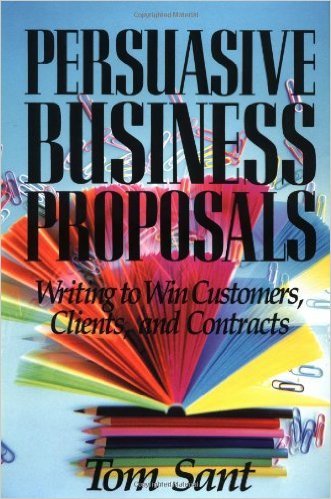A Comprehensive Guide to Crafting Winning Business Proposals
Building on the Foundations of Persuasive Proposal Writing
Tom Sant's seminal work, "Persuasive Business Proposals," has laid the groundwork for effective proposal writing. However, to truly excel in this field, it's essential to delve deeper into the intricacies of understanding client needs, crafting compelling narratives, and building strong relationships.
Key Principles for Winning Proposals:
1. Deep Dive into Client Needs
- Empathy and Understanding: Put yourself in the client's shoes to grasp their challenges and aspirations.
- Thorough Research: Conduct in-depth research to understand the client's industry, competitors, and specific requirements.
- Tailored Solutions: Develop customized solutions that directly address the client's pain points.
2. Crafting a Compelling Narrative
- Storytelling: Use storytelling techniques to engage the reader emotionally and create a memorable experience.
- Clear and Concise Language: Avoid jargon and technical terms. Use simple, direct language that is easy to understand.
- Strong Visuals: Employ high-quality visuals, such as charts, graphs, and infographics, to enhance understanding and engagement.
- Consistent Branding: Maintain a consistent brand voice and visual identity throughout the proposal.
3. Highlighting Unique Value Proposition
- Differentiate Yourself: Identify what sets your offering apart from competitors.
- Focus on Benefits: Highlight the specific benefits that your solution will bring to the client.
- Quantify Results: Use metrics and case studies to demonstrate the tangible value of your proposal.
4. Building Credibility and Trust
- Showcase Expertise: Highlight your team's experience, qualifications, and industry knowledge.
- Provide Testimonials: Share positive feedback from past clients to build credibility.
- Address Potential Objections: Anticipate and address potential concerns proactively.
5. Creating a Strong Call to Action
- Clear and Concise: State your desired outcome explicitly.
- Easy to Respond: Provide clear instructions on how to accept your proposal.
- Sense of Urgency: Gently encourage timely decision-making without being overly aggressive.
6. Robust Proposal Structure
- Clear and Logical Organization: Structure your proposal in a way that is easy to follow and understand.
- Consistent Formatting: Use consistent fonts, font sizes, and spacing throughout the document.
- Professional Design: Create a visually appealing and professional document.
7. Persuasive Writing Techniques
- Strong Voice and Tone: Use a confident and persuasive tone.
- Active Voice: Use active voice to make your writing more direct and engaging.
- Power Words: Use power words to create a sense of urgency and excitement.
8. Problem-Solving Prowess
- Deep Dive into Client Needs: Understand the client's problems at a granular level.
- Innovative Solutions: Propose creative and effective solutions that address the root causes.
- Quantifiable Benefits: Highlight the specific, measurable benefits of your solution.
9. Risk Mitigation and Contingency Planning
- Identify Potential Risks: Anticipate potential challenges and develop strategies to mitigate them.
- Create a Contingency Plan: Have a backup plan in place for unforeseen circumstances.
10. Pricing Strategy
- Value-Based Pricing: Justify your pricing based on the value you provide.
- Flexible Pricing Models: Offer flexible pricing options to meet the client's needs.
- Transparent Pricing: Clearly communicate your pricing structure.
Recommended Reading:
- Writing Winning Business Proposals, Third Edition
- Bulletproof Problem Solving
- Persuasive Business Proposals: Writing to Win More Customers, Clients, and Contracts by Tom Sant
By incorporating these key principles and leveraging the insights from recommended reading, you can elevate your proposal writing skills and significantly increase your chances of winning more business. Contact ias0research.com for details.



